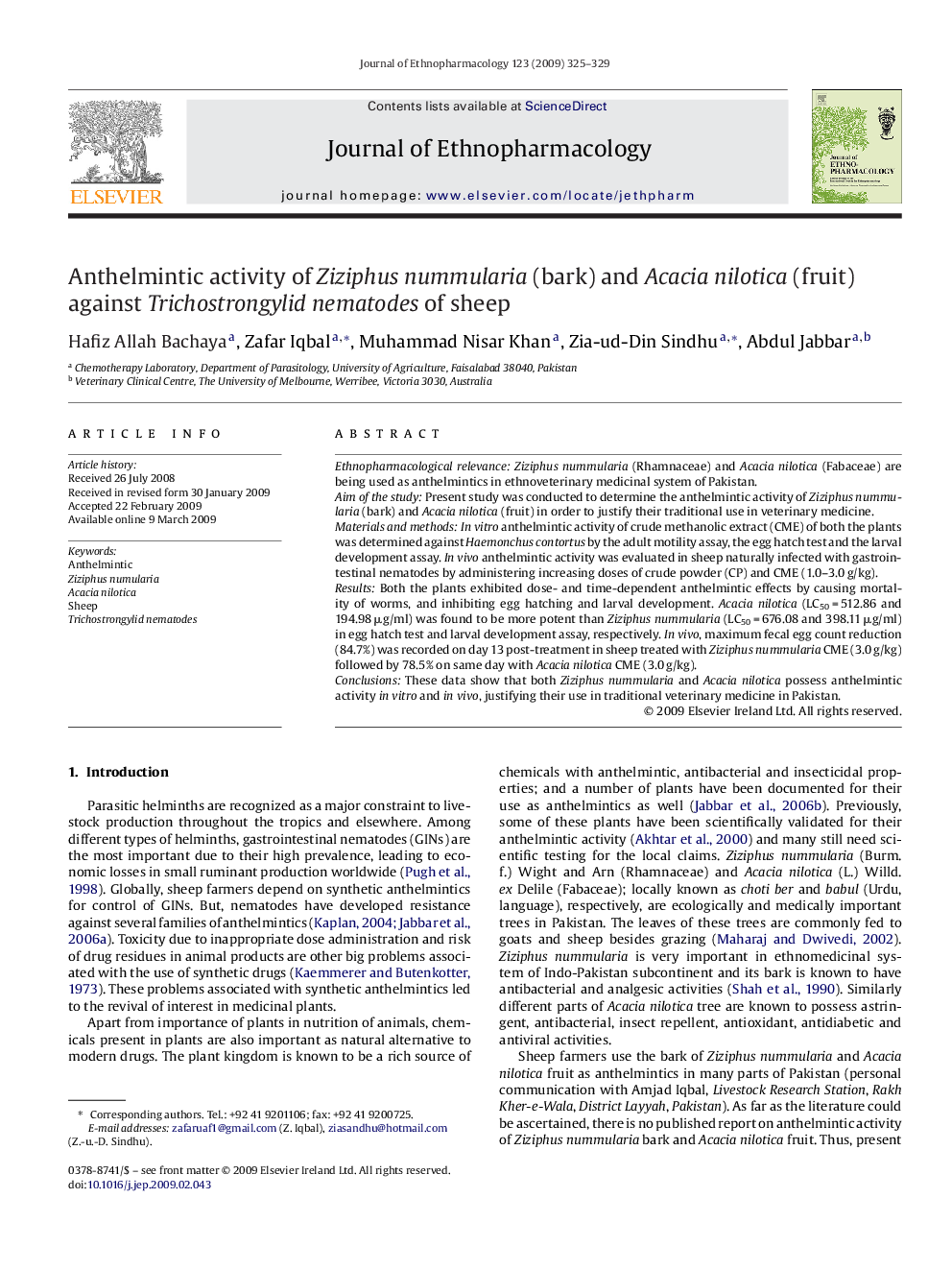| Article ID | Journal | Published Year | Pages | File Type |
|---|---|---|---|---|
| 2547419 | Journal of Ethnopharmacology | 2009 | 5 Pages |
Ethnopharmacological relevanceZiziphus nummularia (Rhamnaceae) and Acacia nilotica (Fabaceae) are being used as anthelmintics in ethnoveterinary medicinal system of Pakistan.Aim of the studyPresent study was conducted to determine the anthelmintic activity of Ziziphus nummularia (bark) and Acacia nilotica (fruit) in order to justify their traditional use in veterinary medicine.Materials and methodsIn vitro anthelmintic activity of crude methanolic extract (CME) of both the plants was determined against Haemonchus contortus by the adult motility assay, the egg hatch test and the larval development assay. In vivo anthelmintic activity was evaluated in sheep naturally infected with gastrointestinal nematodes by administering increasing doses of crude powder (CP) and CME (1.0–3.0 g/kg).ResultsBoth the plants exhibited dose- and time-dependent anthelmintic effects by causing mortality of worms, and inhibiting egg hatching and larval development. Acacia nilotica (LC50 = 512.86 and 194.98 μg/ml) was found to be more potent than Ziziphus nummularia (LC50 = 676.08 and 398.11 μg/ml) in egg hatch test and larval development assay, respectively. In vivo, maximum fecal egg count reduction (84.7%) was recorded on day 13 post-treatment in sheep treated with Ziziphus nummularia CME (3.0 g/kg) followed by 78.5% on same day with Acacia nilotica CME (3.0 g/kg).ConclusionsThese data show that both Ziziphus nummularia and Acacia nilotica possess anthelmintic activity in vitro and in vivo, justifying their use in traditional veterinary medicine in Pakistan.
